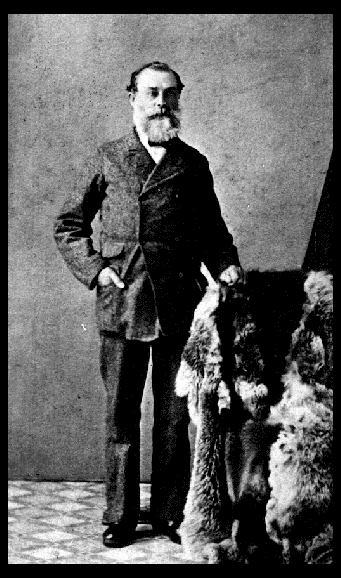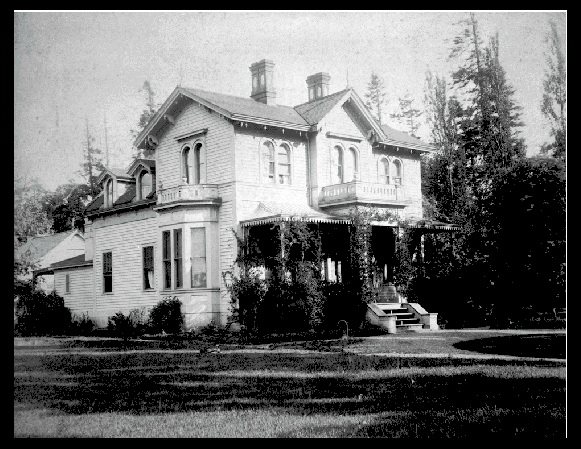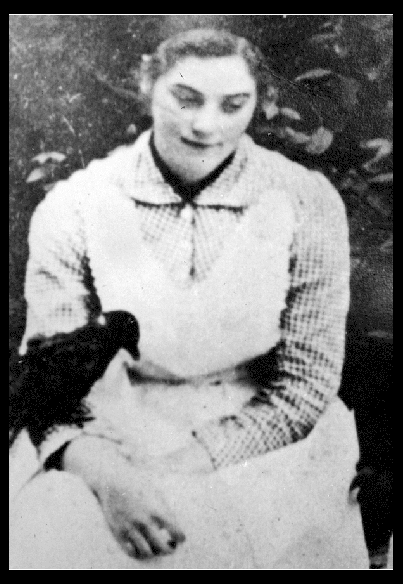Historical Background of Victoria
General Progress on Wharf Street
List of Wharf Street Businesses
Richard Carr
Richard Carr was born in England on July 16, 1818. Carr was the youngest of thirteen children and received no formal education. In 1937, Carr set off to travel the world and went by ship to America. Like many others, Carr went to California during the 1849 gold rush where he became a successful merchant. There Richard Carr met an English woman by the name of Emily Saunders and the two returned to England in 1855 to be married in her home town. The Carrs went back to California for an additional five years where they started a family. Due to his wife's poor health, Carr and his family returned to England in 1861 with 30,000 dollars in profits from the sale of his business interests in California. In addition, Carr brought the first import of California wheat to England. Two years later, as a result of his wife's continued health problems and his boredom with retirement, Carr moved his family to Victoria. The Carrs had nine children, the youngest Emily became a prominent artist in Victoria well known for her paintings of the west coast and Aboriginal villages.25
In Victoria, Richard Carr worked as a wholesale merchant. He erected a building at 1107 Wharf Street in 1862, next to the Rithet Building where he established his wholesale business. The following year Carr purchased four acres of land in James Bay and built a large house on the property. The total cost to buy the land and build the home was approximately $10,000, a large sum during that time.26 Richard Carr’s wife died in 1888 and he passed away in 1890. The old family home at 207 Government Street is now a National Historic site and the premises of his wholesale food and liquor business housed the Emily Carr Gallery for many years.
In Book of Small, Emily Carr offers a colourful description of her father’s business and the surrounding area on Wharf Street, as well as a unique glimpse into a commercial warehouse in the nineteenth century. Emily describes the view of the Lekwammen reserve across the harbour and the long, low redbrick building that housed the Hudson’s Bay Company store. She recalled seeing the natives crossing the harbour in their canoes on their way to trade at the store. Emily also describes the inside of her father’s store as follows:
The inside of Father’s store was deep and dark. Cases, crates, and barrels stood piled one on top of another right up to the ceiling, with just a narrow lane running down the middle and ending in what was called “the yard”— not a yard at all, only a strong, rough board shed filled with “empties” and cats. There were no windows; the cats crawled in and out of the “empties” hunting for rats, their eyes shining in the black. Slits of daylight cut between the boards of the shed walls, and shadows thrown by a sputtering gas jet made it all spooky and unreal—different from the solid, comfortable feel of the outer store, crammed with provisions.27
Richard Carr brought fresh milk in every morning to feed the cats as he claimed that a diet of rat alone was not healthy. Emily provides further description of the interior of the store when she states:
Father’s office was beside the open front of his big store and in it Father sat in front of a large, square table covered with green braize; on it in front of him was a cupboard full of drawers and pigeon-holes. He sat in a high-backed wicker armchair. His beard was white and, after he went bald, he wore a black skull cap. A fat round stove, nearly always red hot, was between Father’s table and the long, high desk where his men stood or sat on high stools doing their books when they were not trundling boxes on a truck. There was an iron safe in one corner of the office with a letter press on top and there were two yellow chairs for customers to sit on while Father wrote their orders in his book. Everything was dozened in Father’s store: his was not a business that sold things by pinches in paper bags. High along the wall ran four long shelves holding glass jars of sample English sweets—all pure, all wholesome, all English. The labels said so.28
Studio Portrait of Richard Carr - 1876
Carr Family Residence at 207 Government Street - 1891
Emily Carr age 16 - 1887


